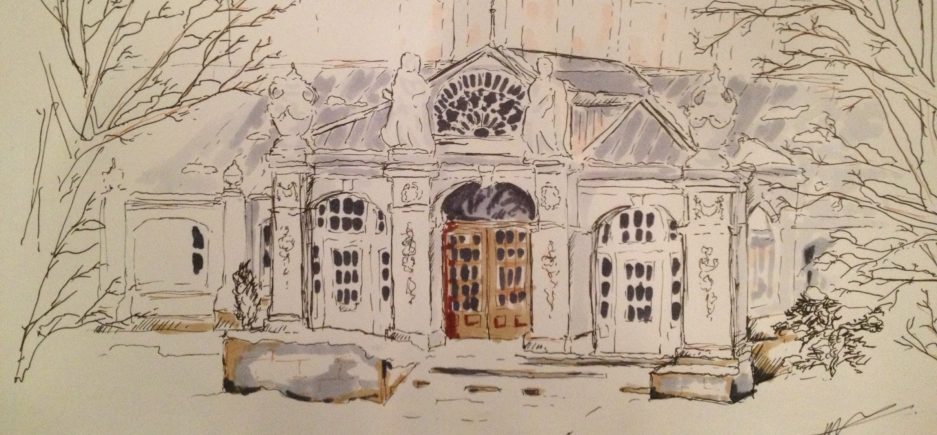The Institute for Molecular Botany occupies perhaps the most beautiful building in the city. The facade is white limestone and baroque in style. Within the intricately carved swags and flourishes, exactly 142 species of plant are represented by virtue of foliage or flowers. The elegant double doors lead to the atrium. Here the rococo extravagance of the exterior is replaced by a sweeping glass walled lightwell rising five stories, through which can be seen living walls of greenery. These are characterised by abundance and variety, from cascading trailers to robust, fleshy succulents, in every shade of green, silver and deep red. The air is redolent with sap, earth and nectar, like that of a florist’s shop. The lift shaft, also glass, travel up along one side of the atrium, and on each floor glass corridors lead off to the laboratories. Everywhere there are plants growing; the corridors are lined with planters and even the lift contains something of a window-box along one side. The laboratories are open, white spaces, specimens crowding the benches and bays and straining eagerly for the overhead lights. It was here that cerastabine, now a leading anticancer agent, was first isolated from an unassuming weed collected in the Nicaraguan highlands. Here also hybrids are being developed to produce all manner of useful substances, from plastics to fuels. On the fourth floor, the topmost, are a lecture hall, meeting rooms and a space for receptions. The open area is lined with exquisite photographs from the microscopy division, luminous close-ups of the innermost life of the surrounding plants. As a centrepiece, a collection of rarities, chosen for beauty of leaf or bloom, is arranged over and around a large piece of driftwood. A tour of the building comes highly recommended, although access to some of the laboratory areas is restricted.
